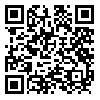Volume 4, Issue 2 (8-2021)
Iranian Journal of Educational Sociology 2021, 4(2): 14-23 |
Back to browse issues page
Download citation:
BibTeX | RIS | EndNote | Medlars | ProCite | Reference Manager | RefWorks
Send citation to:



BibTeX | RIS | EndNote | Medlars | ProCite | Reference Manager | RefWorks
Send citation to:
Asdolahzadeh P, Sadeghi J, Abbasi Asfajir A A. (2021). Modeling the Structural Equations of Mode Metacognition with a Tendency to Cyberspace Mediated by Self-efficacy in Gifted Students. Iranian Journal of Educational Sociology. 4(2), 14-23. doi:10.52547/ijes.4.2.14
URL: http://iase-idje.ir/article-1-985-en.html
URL: http://iase-idje.ir/article-1-985-en.html
1- PhD Student, Department of Educational Psychology, Babol Branch, Islamic Azad University, Babol, Iran
2- Assistant Professor, Department of Psychology, Babol Branch, Islamic Azad University, Babol, Iran.
3- Associate professor, Department of Sociology, Babol Branch, Islamic Azad University, Babol, Iran.
2- Assistant Professor, Department of Psychology, Babol Branch, Islamic Azad University, Babol, Iran.
3- Associate professor, Department of Sociology, Babol Branch, Islamic Azad University, Babol, Iran.
Abstract: (1047 Views)
Purpose: The purpose of the present study was to determine the structural relationships between mode metacognition and cyberspace with self-efficacy mediation in gifted students in Ghaemshahr, Babol, and Sari. There is a structure.
Methodology: The method was correlation using structural equation modeling. The statistical population of the study consisted of all 1000 gifted female high school students in three grades (first, second and third) of Ghaemshahr, Babol and Sari cities. For each observed variable (18 variables observed in the model), and considering the possibility of incomplete questionnaires, 350 people were selected as the sample size by census method. Jafari & Kalantari (2016) cyberspace questionnaire, Morris (2001) self-efficacy questionnaire and Onil & Abedi (1996) mode metacognition questionnaire were used to collect data. Data were analyzed using SPSS 18 and AMOS 23 software.
Findings: The results show that mode metacognition has a direct effect on the tendency of cyberspace in gifted students of Ghaemshahr, Babol and Sari.
Conclusions: Therefore, those who have learned poor cognitive adjustment strategies may be more susceptible to using high-risk behaviors as a means of alleviating negative cognition than others.
Methodology: The method was correlation using structural equation modeling. The statistical population of the study consisted of all 1000 gifted female high school students in three grades (first, second and third) of Ghaemshahr, Babol and Sari cities. For each observed variable (18 variables observed in the model), and considering the possibility of incomplete questionnaires, 350 people were selected as the sample size by census method. Jafari & Kalantari (2016) cyberspace questionnaire, Morris (2001) self-efficacy questionnaire and Onil & Abedi (1996) mode metacognition questionnaire were used to collect data. Data were analyzed using SPSS 18 and AMOS 23 software.
Findings: The results show that mode metacognition has a direct effect on the tendency of cyberspace in gifted students of Ghaemshahr, Babol and Sari.
Conclusions: Therefore, those who have learned poor cognitive adjustment strategies may be more susceptible to using high-risk behaviors as a means of alleviating negative cognition than others.
Type of Study: Research Article |
Subject:
Special
Received: 2021/02/21 | Accepted: 2021/03/1 | Published: 2021/06/3
Received: 2021/02/21 | Accepted: 2021/03/1 | Published: 2021/06/3
Send email to the article author
| Rights and permissions | |
 |
This work is licensed under a Creative Commons Attribution-NonCommercial 4.0 International License. |








.jpg)
